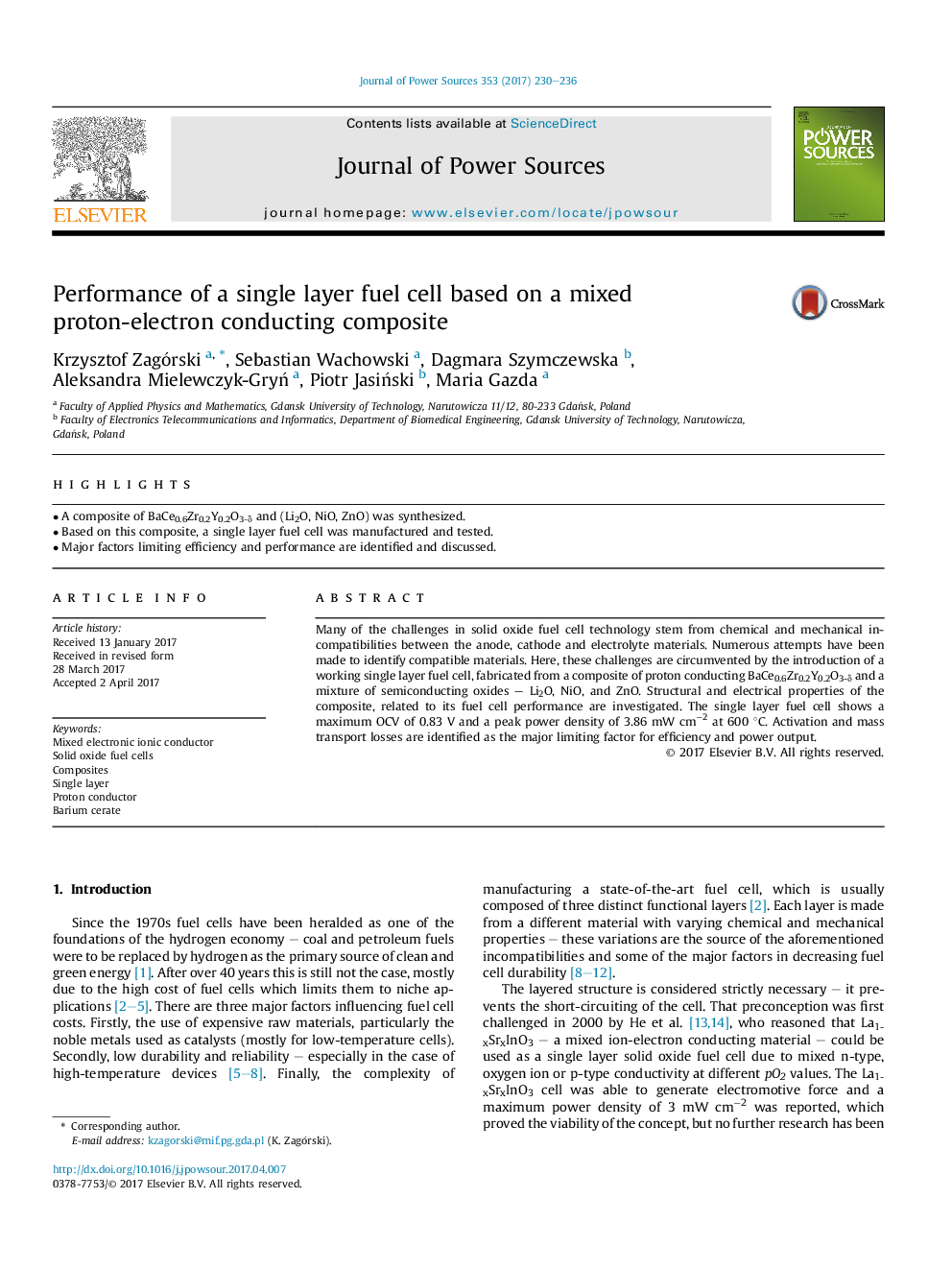| Article ID | Journal | Published Year | Pages | File Type |
|---|---|---|---|---|
| 5149168 | Journal of Power Sources | 2017 | 7 Pages |
Abstract
Many of the challenges in solid oxide fuel cell technology stem from chemical and mechanical incompatibilities between the anode, cathode and electrolyte materials. Numerous attempts have been made to identify compatible materials. Here, these challenges are circumvented by the introduction of a working single layer fuel cell, fabricated from a composite of proton conducting BaCe0.6Zr0.2Y0.2O3-δ and a mixture of semiconducting oxides - Li2O, NiO, and ZnO. Structural and electrical properties of the composite, related to its fuel cell performance are investigated. The single layer fuel cell shows a maximum OCV of 0.83 V and a peak power density of 3.86 mW cmâ2 at 600 °C. Activation and mass transport losses are identified as the major limiting factor for efficiency and power output.
Related Topics
Physical Sciences and Engineering
Chemistry
Electrochemistry
Authors
Krzysztof Zagórski, Sebastian Wachowski, Dagmara Szymczewska, Aleksandra Mielewczyk-GryÅ, Piotr JasiÅski, Maria Gazda,
